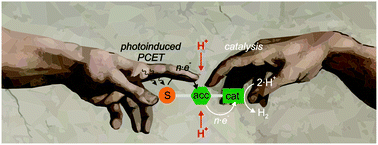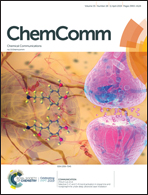Proton-coupled multi-electron transfer and its relevance for artificial photosynthesis and photoredox catalysis
Abstract
The conversion of CO2, H2O, or N2 to energy-rich compounds such as CH3OH, H2 or NH3 requires the properly orchestrated transfer of multiple electrons and protons. Artificial photosynthetic systems therefore must be able to synchronize the rapid primary photoinduced transfer of single electrons to the slower catalytic (multi-electron) turnover of substrates, and this generates a need for temporary accumulation and storage of redox equivalents. This is a very difficult task, particularly in absence of sacrificial reagents. Toward this end, proton-coupled multi-electron transfer (PCMET) driven by light is now receiving increased attention. This invited Feature article considers recent pertinent studies of donor–sensitizer–acceptor compounds and inorganic–organic hybrid systems, as well as some recent photoredox catalysis studies of proton-coupled multi-electron reductions. Key principles for successful light-driven accumulation and storage of redox equivalents are discussed, and the relevance of PCMET for the formation of solar fuels and for photoredox catalysis is emphasized.

- This article is part of the themed collections: Most popular organic chemistry articles and Frontiers in Proton Coupled Electron Transfer (PCET)


 Please wait while we load your content...
Please wait while we load your content...